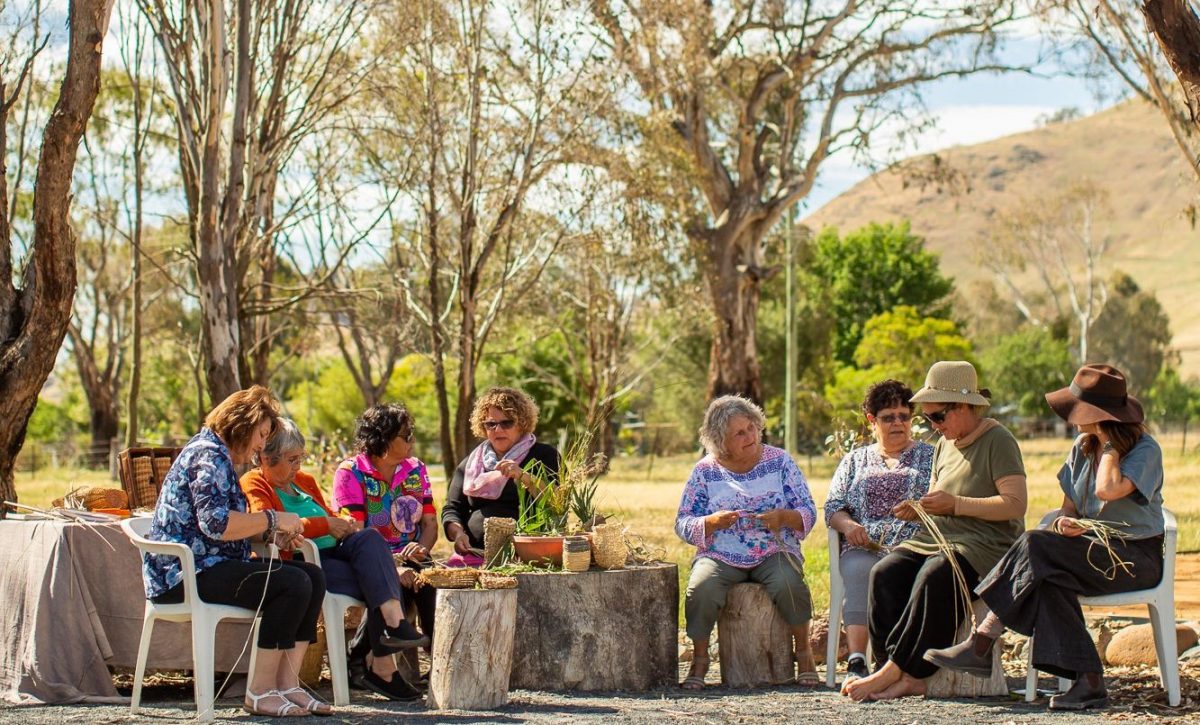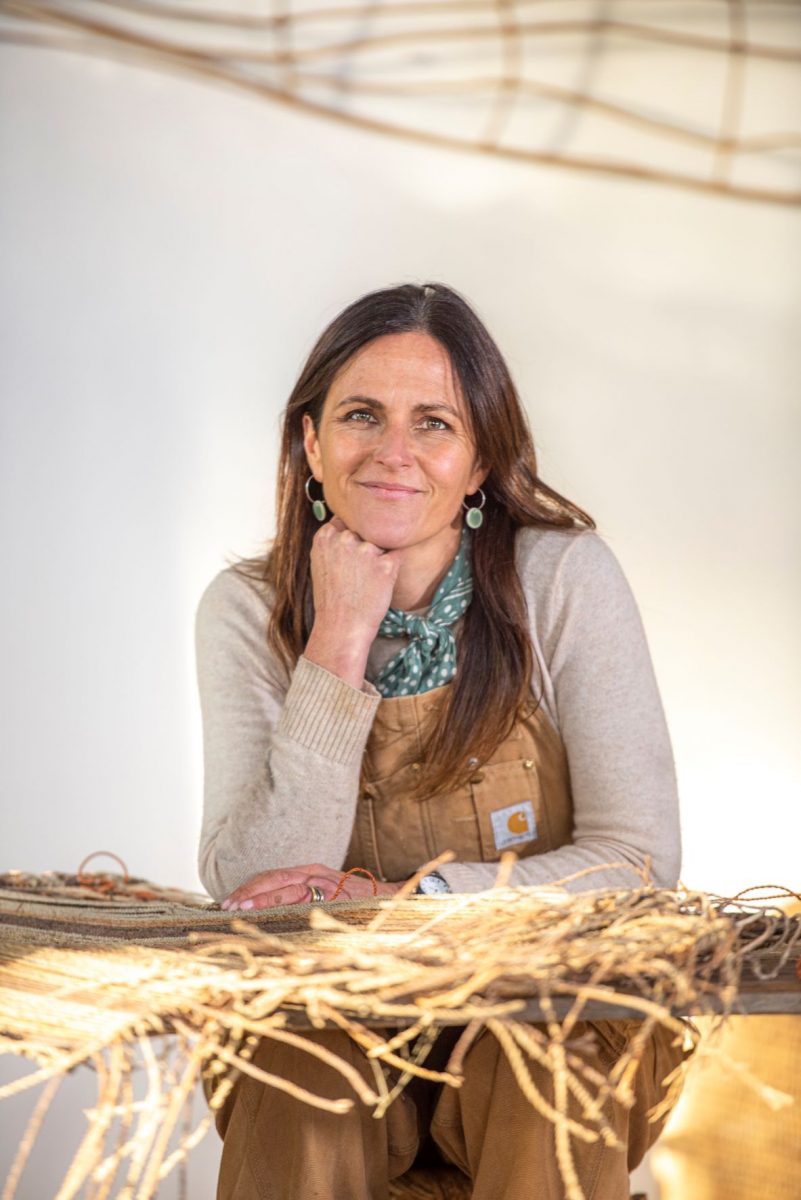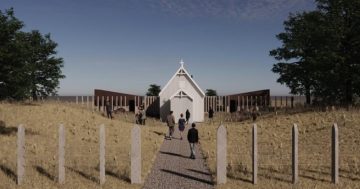
Opening at Museum of the Riverina this weekend, Waybali Murruway – Weaving Paths draws on imagery, story and weaving by the Wiradjuri communities as a means of celebrating their language, culture, heritage and ceremony. Photo: Jackie Cooper, Jack of Hearts Studio.
We all talk about paths in life and where they take us, but it was a conversation with Sarah Last of The Wired Lab that allowed Harriet Goodall her homecoming.
Harriet’s childhood home “Coolibah” sat snugly atop the hills of the South West Slopes, expansive views across The Bland to the west and north to the Weddin Mountains.
This 1200-acre place – devoted then to the business of growing crops and sheep – was a ready playground for young Harriet to explore and discover, with hints to its inhabitants, ancient and former, still discernible to the ready eye.
Like most farming families the name and the place were synonymous, forging an ironclad identity that plastered her teenage schoolbooks: Harriet Goodall, “Coolibah” Young.
Even now the Goodalls are as much a part of the history of the town and district as – well – the annual picnic races and Toompang Polo when they were a May must.
So when the family sold and left the district it was a “huh” moment of uneasy disquiet for those left behind.
For Harriet an immense sadness, discomfort and loss of identity eventually segued to acceptance.
“I guess, being forced away from Young because my family sold our property, I feel like it’s a very strange notion now that that identity is belonging to a piece of property as opposed to the land itself,” she said.

What started as a weekend community basketry workshop in Cootamundra evolved to Harriet Goodall’s involvement in a five-year project that culminates this weekend in an exhibition opening at Museum of the Riverina in Wagga Wagga. Photo: Ashley Mackevicius.
But the renowned Southern Highlands-based sculptural weaver, whose work is feted by interior designers, still identifies as a country woman.
“The country and all that stuff you grow up with,” she muses, “yeah, we left, but it sort of stays with you I guess.
“That’s the same for the Aboriginal people. It’s all the Indigenous people. It doesn’t matter if you force them away, it’s who they are, you know.”
Harriet’s work with Indigenous communities worldwide places her on the front row of realisation, but the time she has spent with Wiradjuri communities in the South West Slopes and Riverina has given her a sense of homecoming, forging an even deeper connection with a landscape that once was her view.
What started as a weekend community basketry workshop in Cootamundra evolved to Harriet’s involvement in a five-year project that culminates this weekend in an exhibition opening at Museum of the Riverina in Wagga Wagga.
Spanning the communities of Mitta Mitta, Muttama, Brungle, Ngurrangera (Narrandera), Wagga Wagga and Gudhamangdhuray (Cootamundra), the Waybali Murruway – Weaving Paths exhibition draws on imagery, story and weaving by the Wiradjuri communities as a means of celebrating their language, culture, heritage and ceremony.
It marks the revival of ancient practices that would have been lost, had it not been for the The Wired Lab’s agri(culture) – Wiradjuri Grasslands project, Waybali Murruway, which back in 2017 engaged external facilitators to run workshops geared to close cultural knowledge gaps in resource gathering, plant knowledge and skills in southern parts of NSW.
Workshops that have now evolved into regular excursions to farms and riversides grounded in the context of caring for Country and still involve the inspiration, hardwork and dedication of the Waybali Murruway team including Mel Starfishdreamings Evans, Harriet Goodall, Cheryl Penrith, Ngaayuga Migii and workshop participants.
“I go teach in lots of different places but Cootamundra holds as much appeal as any because it’s, you know, going home,” Harriet said.
Harriet said she wasn’t so much a teacher but a facilitator of knowledge about how to harvest, dry, store and weave native grasses gathered on Country.
“I went in to teach basketry and weaving but it was really just to try and help remember lost techniques because all these sorts of things to that culture would have been rich,” Harriet explained.
“Rich in a beautiful time when these were apparently very happy communities,” she added, “that all came to an end when they were moved to town and they were forced to forget about their traditions and practices.”
“Some of the people I’m working with – mothers and grandmothers were in homes, in the missions around Cootamundra and I didn’t even know they existed,” she said. “It’s a story that’s national history but barely because it wasn’t illustrated to us or me in the 1980s in school.”
Waybali Murruway has not only succeeded in connecting people across four generations and six communities but this exhibition is a significant expression of the regenerative power of regularly gathering on Country and coming together in a yarning (weaving) circle where forgotten practices are being reimagined and pride regained, where reminding participants and their extended family of their cultural resilience.
“The Wiradjuri were shamed into not using their language and shamed into hiding their culture and their aboriginality,” Harriet said. “We’re turning it into pride.”
The Waybali Murruway – Weaving Paths opening takes place on Saturday 10 September from 1 pm at the Museum of the Riverina.
The exhibition will then run until Sunday 20 November.
For more information visit the Museum of the Riverina website.
Original Article published by Edwina Mason on About Regional.









